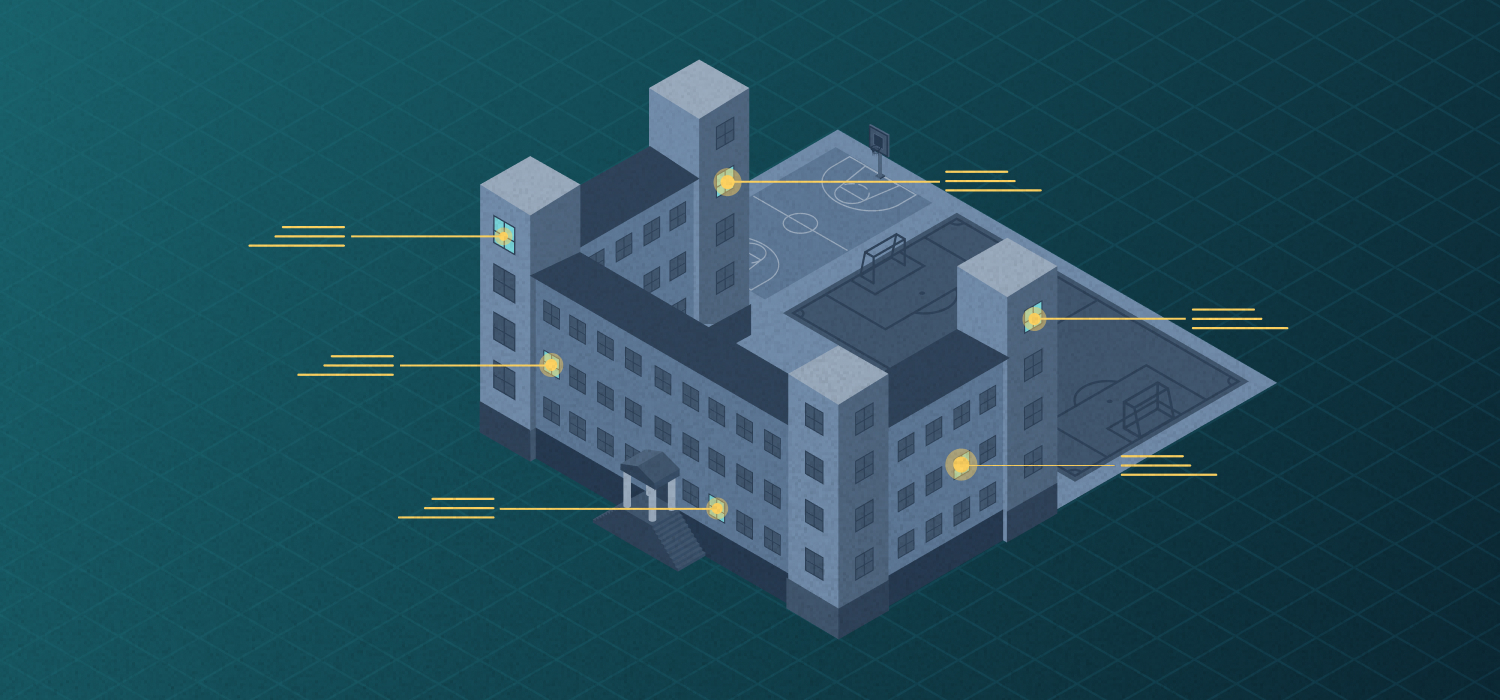February 21, 2024
How to Ensure Campus Safety with 360-Degree Situational Awareness

Nick Kauffman
SLED Account Executive
Colleges and universities, by their very nature, are open and accessible spaces, designed to encourage the exchange of ideas—but this openness also exposes them to various risks and threats. Balancing accessibility with security is a complex challenge, requiring higher education security teams to protect campuses in a way that doesn’t undermine their collaborative ideals.
Integrating real-time alerts and insights into campus security operations provides a solution. By equipping security teams with the ability to gather and analyze data as events unfold, it becomes possible to proactively identify and mitigate potential threats without imposing broad, restrictive measures that could dampen the open environment of a campus. Real-time data empowers campuses around the world to remain welcoming spaces while staying protected against an evolving landscape of threats.
Addressing Security Complexities Across Campuses
Higher education institutions are increasingly diverse and often distributed across multiple locations, demanding security strategies that cater to new, dynamic settings. Strategies must evolve not only technologically but also culturally, recognizing the unique behavioral patterns of each campus community. The problem intensifies as institutions extend globally, encountering new threats from geopolitical tensions to environmental hazards specific to each international location. Traditional security approaches often fall short in these varied contexts, underlining the need for adaptable solutions. Real-time, public data serves as a foundation for this adaptability, providing a detailed, immediate picture of emerging risks and enabling security measures tailored to the specific circumstances of each campus. This visibility enables security teams at a main campus to provide critical insights to and direct on-the-ground personnel at satellite locations.
Enhancing Campus Security with Situational Awareness
The role of situational awareness in higher education security strategies cannot be overstated. By drawing on real time information, security teams can anticipate and mitigate a myriad of potential threats, including:
Terrorism
Analyzing online behaviors, communications, and social media activity in real time allows teams to take preemptive measures. Checking platforms known for hosting extremist content enables a proactive stance, facilitating collaboration with law enforcement for timely interventions.
Event Security
Real-time data on public gatherings and from social media posts enables security teams to anticipate and manage risks during events, such as potential overcrowding, unauthorized access, or emergencies. Promptly mitigating these risks ensures events unfold safely and without interruption.
Extreme Weather Events
Signals for adverse weather and natural disasters, including earthquakes, wildfires, floods, tsunamis, landslides, and droughts can be identified by analyzing commercial meteorological data, enabling security teams at higher education institutions to anticipate and preemptively prepare for severe weather conditions, minimizing risks to campus safety and infrastructure.
Violent Crimes
To deter violent crimes, analyzing crime data, gang activity, and social chatter for unusual activity patterns or threatening behavior is key. Behavioral analysis is crucial in detecting and responding to these threats.
Sexual Assault
Security teams tackling sexual assault can benefit significantly from real-time data, as it helps them parse public online interactions for potential threats. This proactive vigilance enables swift action and support for victims, laying the groundwork for strategies to prevent future incidents.
Hate Crimes
Utilizing real-time data to counter hate crimes involves analyzing online discourse for harmful rhetoric and signs of escalating behavior. This empowers security teams to preemptively address issues, cultivating a secure and welcoming campus atmosphere.
Illicit Substance Use
Real-time data supports curbing illicit substance-related activity on campuses by detecting street names and emojis used to discuss drugs online, enabling security teams to identify dealers and distribution networks. Armed with this knowledge, institutions can launch targeted interventions and awareness campaigns to combat abuse and high-risk behavior effectively.
Suicide Prevention
For suicide prevention, real-time data supports the safeguarding of student well-being. Security teams can set alerts for keywords related to self harm and suicide, ensuring an early detection for any public social posts containing this content. This can ensure that security personnel can offer timely and potentially life-saving interventions to those at risk.
Integrating real-time data and situational awareness into campus safety strategies enables higher education institutions to tailor their approaches to the needs of their communities. This shift towards a data-driven security model also highlights the critical need for a scalable solution for collecting and analyzing vast amounts of real-time data.
Empowering Campus Security with Grid
Skopenow’s Grid is a comprehensive, automated solution providing higher education security teams with 360-degree situational awareness, allowing them to enhance the protection of specific campus areas, respond to emergencies, and manage large-scale events with greater efficiency. Powered by AI, Grid offers a real-time overview of potential threats and emerging risks, from campus-related incidents to broader security concerns, that could impact the university community.
Join over 1,500 organizations, including Fortune 500 companies as well as large government and law enforcement agencies, using Skopenow to make better decisions. To explore the transformative potential of Grid, schedule a personalized demo today at www.skopenow.com/try.


